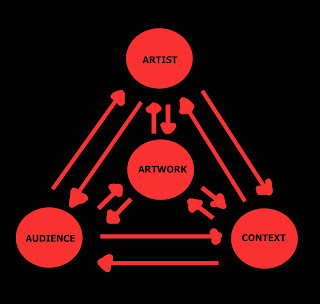The project has so far involved a lot of reading, a lot of thinking and a bit of inaction on my part. I think I might be just a little bit apprehensive about this process and this new approach, this has meant that I am putting off actually getting going, for fear of doing a bad job. Practice which involves a collaboration with the public is, in many ways, much more difficult than independent practice, based in a studio. Suddenly there are a whole host of stakeholders in what you are doing, and to some extent you have a responsibility to the people that you work with; I am afraid of being exploitative.
So, now that I have aired my fears, I can get on with the project...

One of the problems or issues which I aim to look at with the project is the geographical layout of Stoke-on-Trent, which means that defining exactly where and what the city is can be difficult, due to Stoke-on-Trent's status as a conurbation, a city made up of 5 towns. I will then go to each of the five towns next week and repeat the questioning process. I will aim to ask perhaps 50 people in each town the question. This will give me a good idea of what each areas initial response to the question might be, but also may give me a chance to feel what each of the towns are like; is there a difference in how each town responds to being asked the question? How does it feel to be in each place? This then, will be my starting point.
Through much of the reading that I have been doing, I have been most interested in artists projects which involve a dialogical approach to practice. I have found that practitioners working in this way often begin with a central question, and it is this question which acts as a starting point in the early connections with the people that the artist is working with. A project develops from the collaborative process; and the conversations that happen. In the best projects that I have looked at, the artist or art group allows the project to be defined by the process rather than going in with a one-size-fits-all project.
As research for this project I have been reading an amazing book called 'Conversation Pieces,' by Grant H. Kester. It looks at a broad range of collaborative and participatory arts, and goes some way to unpicking some of the problems and issues relevant to this type of art practice. It is also the sort of book that I think every art student should read, in that it deals with the artist's relationship with the viewer, the surprising impact that art can have and the possible limitations involved. It is here that I first picked up on the need for a central question as starting point; something which although obvious, and probably something which I was doing anyway - it was useful to have the idea made overt to me. Kester looks at a broad range of practices and projects, looking at what he sees as good and bad practice. One particular practitioner, who has been working in this area for more than 30 years is Stephen Willats.
public housing estates or tower blocks in England, Germany, Finland and
elsewhere in Europe. Willats is particularly concerned with the social and
somatic experience of living in public housing (especially in isolated
high-rise buildings) and with identifying and facilitating modes of resistance
and critical consciousness among the residents of the estates."
Kester, Grant. H. 2004, p. 91. Conversation Pieces. California: University of California Press.
It shows that the audience, the artist and the context of the project have just as much impact as each other on the artwork. I think this is a really great Model for practice, and I will keep it in mind during the action research project.
In November last year I took part in the Longhouse Professional Artist Development programme, which took place in Stoke-on-Trent. This involved artists (at various stages of the careers) meeting in a city undergoing a process of major change, and looking at possible interventions and creative visions for the City. For an artist, like myself, at an early stage in their career I had the benefit of working with more established, experienced artists thta have been working with the public for many years. One of the other artists on the PAD was Sandra Hall. Sandra is a founding member of Birmingham based 'Friction Arts' a group with an international reputation for making socially engaged participatory art projects since 1992. Sandra and the other members of Friction offer an example of how to approach and work with harder to reach members of the public in a truely mutually beneficial way; creating experiences that have a lasting impact on the communities that they are for. Friction arts sets out their approach on their website:
"Our core approach can be summed up by our first principles whenever we embark on a new adventure:
Who am I? - what am I trying to achieve?
Who are we together? - what is the relationship, what is our mutual agenda?
What are we going to do?
How are we going to do it?
Often, participatory projects start at stage three or four, we believe you can't make a true collaboration without sorting out the first two stages. This is why we rarely repeat projects, different situations require different solutions."
Friction Arts, 2008. Philosophy, Ethic and Methodology. [Website] Available at: http://www.livearts.co.uk/philosophy.htm [accessed 05/09/08]
I hope to be able to go to Birmingham and meet with Sandra and the other Friction members and perhaps see them working in practice as part of my research.
The Friction philosophy and Stephen Willats 'Socially Interactive Model of Art Practice,' will form my research methodologies for the initial stages of this project.


No comments:
Post a Comment